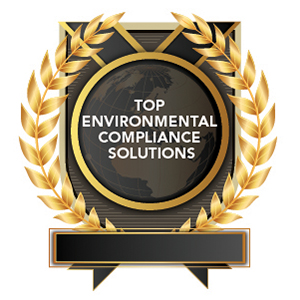Canada’s Path to Eco-Innovation in Sustainable Steel Can Packaging
Thursday, October 30, 2025
The packaging industry is experiencing a major shift driven by growing environmental concerns and consumer demand for sustainable alternatives. Among the most promising innovations is sustainable steel can packaging, which combines functionality with ecological responsibility. This shift responds to the urgent need to cut waste and reduce carbon emissions while supporting the broader goal of a circular economy. For Canadian manufacturers, retailers, and consumers, the rise of sustainable steel can packaging offers a significant opportunity to demonstrate environmental leadership without sacrificing product quality or performance.
The Environmental Goodness of Steel Can Packaging
Steel cans present numerous environmental advantages, establishing them as one of the most sustainable packaging options currently available. Steel has the unique ability to be infinitely recycled without any quality degradation, rendering it an optimal material for circular packaging systems. In contrast to certain materials that are downcycled or lose integrity, steel can be melted and reformed into new products, thereby conserving virgin raw materials. This recycling capability leads to substantial energy and raw materials savings while significantly reducing greenhouse gas emissions associated with its production.
Moreover, steel cans serve as effective barriers for their contents, which contributes to decreasing spoilage and waste, an essential component of sustainability. By ensuring that products are delivered to consumers in a well-protected condition, steel packaging mitigates the environmental consequences that arise from the disposal of spoiled items.
In addition to their recyclability, steel cans offer logistical advantages that enhance sustainability. Steel's inherent strength facilitates efficient stacking and transportation, thereby minimizing space requirements and fuel consumption during transit. Furthermore, steel cans' impermeability protects contents from contamination, resulting in extended shelf life for products and reducing food or item waste at the consumer level. Overall, steel can packaging aligns with the goals of an environmentally conscious supply chain and supports the broader sustainability initiatives being embraced across various industries in Canada.
Initiating Sustainable Steel Packaging Innovations
The progression toward sustainability in steel packaging is propelled by ongoing innovations designed to mitigate environmental impact throughout the product life cycle. Advances in manufacturing techniques pave the way for the production of lighter steel cans, which will diminish raw material consumption and reduce transportation emissions without compromising structural integrity. This "lightweight" approach is particularly vital, as it addresses carbon emissions generated during production, distribution, and end-use. By optimizing the balance between strength and material efficiency, it is possible to develop more sustainable packaging solutions.
Moreover, the coatings and inks utilized on steel cans are undergoing enhancements to improve their environmental friendliness. Traditional packaging materials often incorporate substances that pose challenges for recycling or present potential environmental hazards. Contemporary formulations prioritize non-toxic, biodegradable, and recyclable materials, ensuring sustainability at every phase of the packaging process. The evolution of packaging is intrinsically linked to improvements in consumer experience, resulting in the availability of safer and more environmentally responsible products.
Advancements in digital printing technology have afforded greater precision in graphic placement on steel cans, thereby minimizing material waste and facilitating shorter production runs. This flexibility endorses a more localized approach to packaging, which reduces excess inventory and unsold goods. Additionally, the adoption of innovative packaging technologies, such as QR codes and sensors, is becoming increasingly prevalent. These developments empower consumers to access product information and reinforce recycling initiatives. Such innovations exemplify the commitment to sustainability in steel packaging, extending from material sciences to consumer engagement and environmental education.
Challenges and Future Prospects
Despite the numerous benefits and innovations associated with sustainable steel can packaging, several challenges must be addressed to optimize its environmental potential. A significant concern is the insufficient consumer and industry engagement in recycling programs. This challenge is especially critical given steel's high recyclability; improper disposal and a lack of awareness regarding recycling infrastructure can hinder material recovery. Consequently, it is essential to enhance consumer education about the recyclability of steel cans and to improve collection systems, thereby closing the loop on the steel packaging lifecycle.
Steel production remains an energy-intensive process that generates substantial carbon emissions, particularly through traditional blast furnace operations. The sector is actively exploring cleaner production methods, such as electric arc furnaces powered by renewable energy sources and increased scrap steel recycling. These approaches aim to reduce dependence on fossil fuels and minimize the overall environmental impact.
The future of sustainable steel in packaging appears optimistic, with promising developments on the horizon. Enhanced collaboration among material scientists, producers, and sustainability experts will be instrumental in advancing these initiatives. Furthermore, establishing robust policies and mechanisms to stimulate consumer demand will encourage businesses to prioritize sustainability in design and packaging materials. As global awareness of environmental issues continues to grow, steel can packaging is poised to play a pivotal role in fostering a more sustainable ecosystem for consumer goods.














